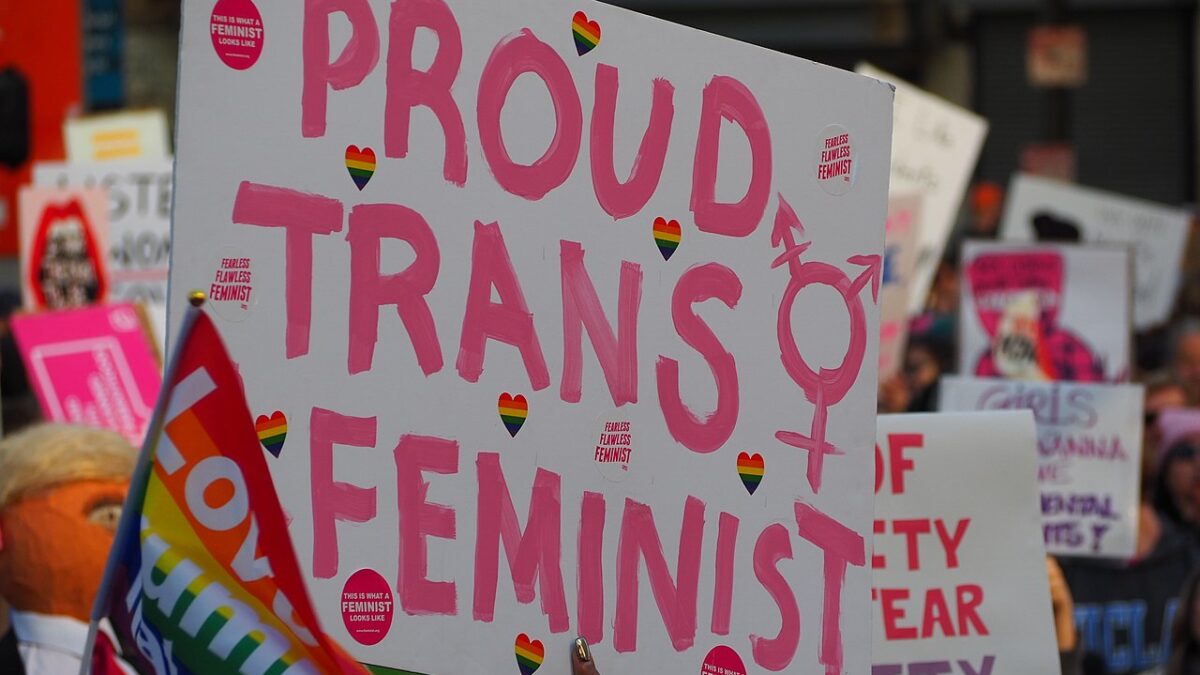
U.S. women crossed a historic milestone this year. The Wall Street Journal reports that while men still make up a slim majority (53.4 percent) of the overall workforce, 2019 marks the first year women represent a majority of the college-educated labor force. This is a remarkable achievement.
Several factors contributed to U.S. women’s historical rise at this moment. For one thing, women have received 57 percent of bachelor’s degrees for the last two decades. With more women getting college degrees, naturally their share of the college-educated labor force has been steadily rising. According to the Journal, “Since 2013, the female share of college-educated workers has been around the 49% mark.” It took another six years for U.S. women to become a slight majority in this category.
Another contributing factor is the structural change of the U.S. economy, moving away from manufacturing-based business to service- and knowledge-based business, which has opened many more employment opportunities in fields that attract women, such as education and health care. The U.S. unemployment rate is at a historical low, and many employers have to increase wages in order to attract qualified workers.
With rising wages and more career opportunities, women’s labor participation rate is rising faster than men’s. From entry-level positions to C-suite, female workers have shown significant growth since 2015 at every level of employment in corporate America.
Your Choice of College Degree Affects Your Earning Power
Of course, when we talk about women in the workforce, one of the left’s favorite topics is the pay gap between the sexes. We’ve all heard the famous statistic that “a woman makes 77 cents for every dollar a man earns.” They’ve used this number as evidence that the United States is a patriarchal society that discriminates against women or, even worse, that there is a war on women going on in America.
Yet this number is misleading. It compares an average of men and women’s earnings across all careers, without taking into account many factors affecting people’s earning power, such as what they studied in college, types of employment, hours worked, and time spent away from work.
A study by Professor Marianne Bertrand of the University of Chicago shows that women’s education choices will affect their earning power long term. It examined a group of people born in 1950 and found that “women in this group studied subjects that produced mean earnings about 14 percent below those in the subjects chosen by men.” It looked at another group of people born in 1985 and found that while the situation improved some, “women still chose degrees that resulted in 6 percent lower mean earnings.”
While more women attend and graduate college than men, many young women tend to choose majors in child development and psychology, work and family studies, social work, and education. These majors are known for some of the lowest starting salaries. Men tend to pursue degrees leading to higher pay, such as those related to science, technology, engineering, and math (STEM).
How much money one makes should not be the only factor for what one finds fulfilling in life, but if maximizing women’s earning power is the goal, we should have honest conversations with young women about how their education choices today will affect their future earnings.
The Choice Gap Gives Women What They Want
Bertrand also points out women generally prioritize family and prefer flexible work arrangements more than male employees do. But flexibility and taking a long time away from work comes with costs, usually in the forms of lower pay and limited career advancement opportunities. This choice gap is responsible for at least a quarter of the early-career pay gap between men and women.
Bertrand didn’t find any evidence to support the left’s insistence that an institutional bias holds women back and prevents them from making equal pay to their male colleagues for doing equal work. On the contrary, when men and women work for the same number of hours and do the same type of work, women often make more than men do.
Time magazine reported young women who work full time out-earn men in their peer group by 8 percent on average. This reverse pay gap between the sexes is even bigger in major metropolitan areas: “Young women in New York City, Los Angeles and San Diego make 17%, 12% and 15% more than their male peers, respectively.”
More women in the labor force means more women are creating wealth. It is estimated that by 2030, women will control more aggregate wealth in the United States than men. So far, no activists, no politicians, and certainly no male workers are complaining about this reverse pay gap.
Women are not only creating more wealth these days, but they are also getting the kind of benefits they desire from eager employers. The Journal reports that U.S. companies are changing their benefit plans in order to attract female workers. More U.S. employers already offer paid family leave — the percentage has increased from 24 percent in 2015 to 40 percent in 2018.
One survey shows 17 percent of U.S. employers offered to cover the cost of egg freezing for their employees in 2018, and 66 percent of employers plan to offer a variety of fertility benefits by 2019. More and more companies also increase flexibility of their work arrangements to cater to women’s preferences.
The more women in the workforce, the more companies will increase pay and offer benefits that are clearly attractive to women. The more companies do so, the more women will join the labor force. If politicians and government agencies really want to help women, they should stop imposing unnecessary regulatory burdens on employers and focus on how to help our economy grow instead. In a growing economy, employers will step up to the plate to attract and keep their talented female workers.
Time-Tested Advice for a Successful Career
This is the best time to be an American woman. There’s no systematic discrimination or other external dark forces preventing you from being who you are and having a fulfilling life and a rewarding career. Success comes from within.
That’s what I learned from Heidi Ganahl, who overcame extraordinary adversity in life and founded Camp Bow Wow, a $100 million leader in the pet industry. Ganahl just wrote a new book, titled “SheFactor: Present Power — Future Fierce,” hoping to help young women “determine their goals and enjoy the journey they undertake to achieve them.”
Below are a few pieces of time-tested advice from her:
- Tenacity — I’m stubborn and focused when I am passionate about something. I live, eat, and breathe my vision. I stay the course.
- Support — My folks were married at 18/20, worked so hard to give my brother and I what we needed to succeed. They instilled in us an appreciation for how blessed we were to be born in this country, and to get an education and get out there and have fun accomplishing great things, including giving back.
- Not Making it About Being a Woman — It was more about being a good leader, learning all I could from other successful folks, and working so hard to make my dream come to reality. It didn’t occur to me while building a $100 million brand that I was a woman and at a disadvantage. I just wanted to see my vision come to fruition.
- Do What You Love — If you don’t do something you are passionate about, you won’t have that edge that keeps you working when you want to quit, you won’t have that love of what you do that drives you to get the job done.
I have no doubt any young woman who follows these pearls of wisdom will have a successful career and fulfilling life.









